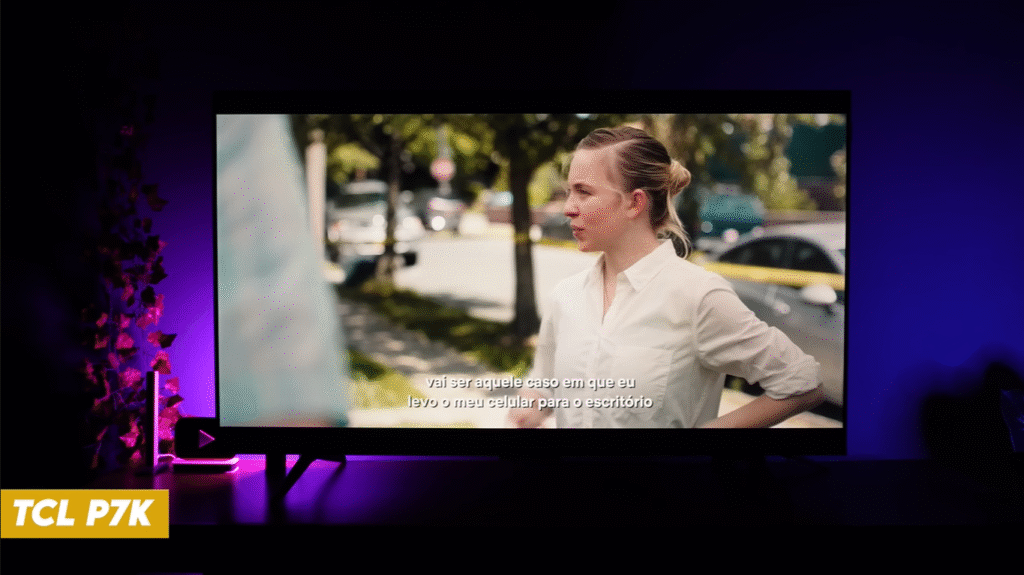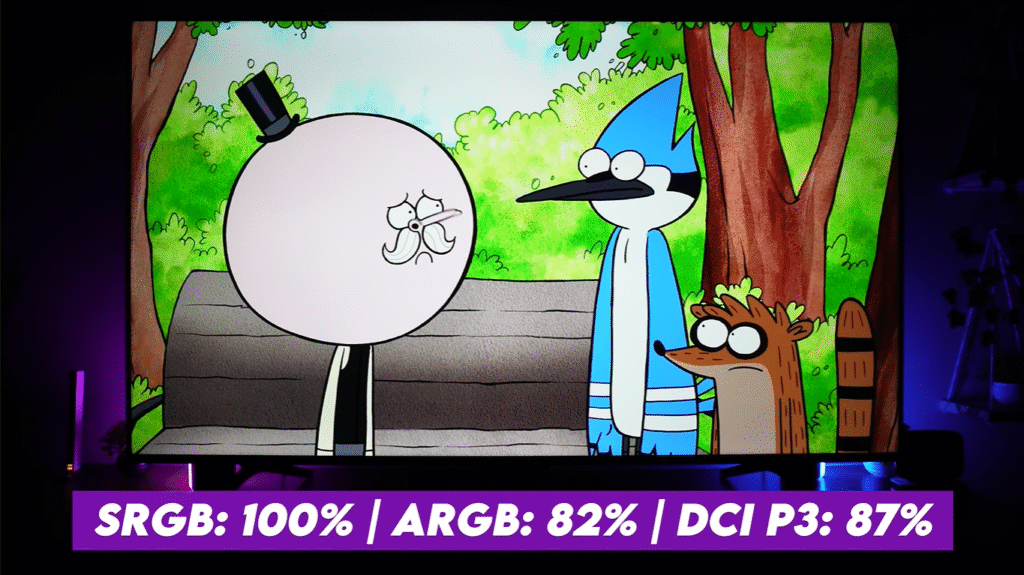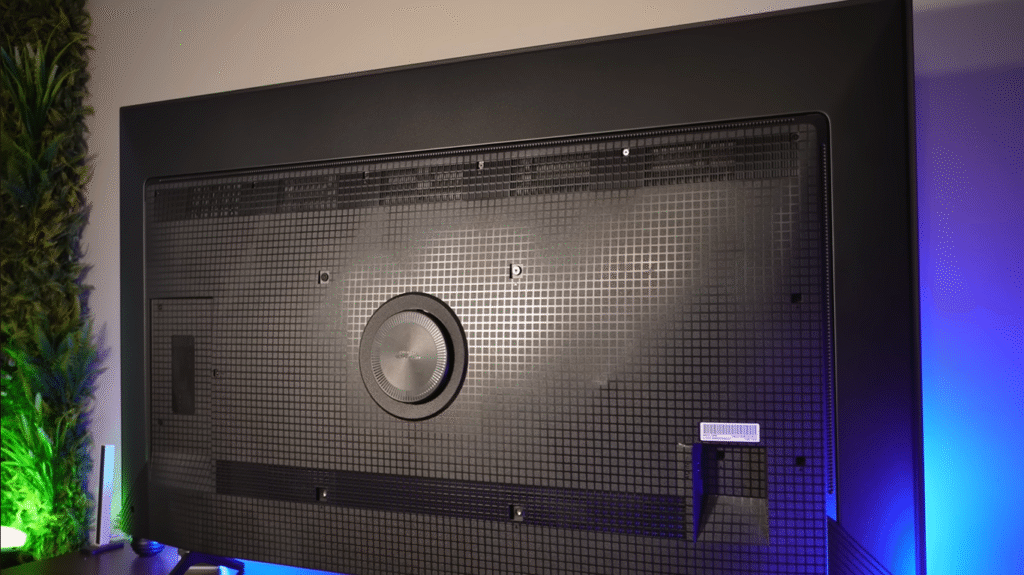The TCL P8K QLED TV, launched in 2025, has sparked buzz in the UK’s sub-£700 market with its £459 (55-inch) and £599 (65-inch) price tags, promising a 4K HVA panel, Onkyo-tuned audio, and Google TV OS. After a week of testing—streaming The Crown on Netflix, gaming on a PS5, and watching cable—I found its 4580:1 contrast and 2.1-channel sound impressive for the price. But it’s not flawless. From brightness issues to lackluster upscaling, this blog uncovers five reasons why the P8K may not suit everyone.
If you’re shopping for a 4K TV under £700, here’s what you need to know before clicking ‘Buy Now’.
Introduction – Why You Should Think Twice Before Buying the TCL P8K
TCL’s rise in the UK TV market has made it a go-to for budget-conscious buyers, and the 2025 P8K QLED aims to dominate with its sleek design, 4K 144Hz gaming support, and vibrant colors. On paper, it’s a steal, but my hands-on tests revealed drawbacks that could disappoint specific users. Whether you’re a movie buff in a bright room, a gamer needing precision, or a family watching from multiple angles, the P8K has limitations. This blog highlights five critical reasons to reconsider, comparing it to rivals like Samsung Q60C and Hisense U6K. Can it truly deliver premium QLED performance? Let’s dive into the reasons to avoid it.
Reason #1 – Limited Peak Brightness (Not Ideal for Bright Rooms)
The TCL P8K’s HVA QLED panel peaks at just 313 nits, well below the 450 nits of the Samsung Q60C or 500 nits of the Hisense U6K. During my test in a UK living room with large windows, HDR content like Top Gun: Maverick on Netflix looked washed out in daylight, with highlights losing vibrancy. The 4580:1 contrast ratio delivers deep blacks in dim settings, but in bright environments, the low brightness dims the QLED’s promise. For UK homes with open layouts or Indian expats in sunny flats, this is a dealbreaker.

Quick Takeaway: Perfect for dark rooms, disappointing for daylight viewing. Alternative: The Hisense U7K (£529) offers 500 nits for brighter spaces.
Reason #2 – Average Upscaling Quality (Not True 4K Experience)
The P8K’s AQ Pro processor handles upscaling, but it’s not a standout. My tests with 1080p YouTube videos and SD cable channels showed clean images but visible artifacts in fast scenes, like cricket matches. Compared to LG’s Alpha 5 or Samsung’s Crystal Processor, the P8K fails to make HD content look near-4K, leaving older Netflix shows or UK Freeview channels less sharp. For Indian households reliant on set-top boxes or US users with mixed streaming, this limits the experience.

Quick Verdict: Great for native 4K, mediocre for everything else.
Alternative: The Samsung Q60C (£499) delivers sharper upscaling for non-4K content.
Reason #3 – Narrow Viewing Angles (Colour Shift from the Side)
The P8K’s HVA panel excels in contrast but struggles with viewing angles. During my test, watching a Premier League match with friends, colors faded beyond 45 degrees, with greens and blues losing saturation onthe side sofas. This makes it less ideal for large UK living rooms or Indian family gatherings where viewers sit at angles. IPS panels, like those in the Hisense U6K, or OLED TVs maintain color consistency off-axis, offering a better group viewing experience.
Quick Verdict: Best for solo viewing, not for family movie nights.
Alternative: The Hisense U6K (£479) provides wider angles for group settings.
Reason #4 – Dolby Vision & Atmos Are There… But Underpowered
The P8K supports Dolby Vision and Dolby Audio, but its 313-nit brightness and lack of dedicated upward-firing speakers limit their impact. My test with Oppenheimer on Netflix showed Dolby Vision Dark mode revealing shadows, but the low brightness dulled highlights, unlike TCL’s C755 (600 nits). Dolby Audio lacks the 3D immersion of Atmos, as the 2.1-channel setup can’t replicate height effects. For UK movie buffs expecting premium HDR and sound, these features feel like marketing checkboxes.

Quick Verdict: Dolby in name, not in performance.
Alternative: The TCL C755 (£699) maximizes Dolby Vision with higher brightness.
Reason #5 – No Mini-LED or Local Dimming Zones (Average Contrast Control)
Unlike TCL’s higher-end C755 or Hisense U7K, the P8K uses edge-lit QLED technology without Mini-LED or local dimming zones. My test with The Batman revealed haloing around subtitles in dark scenes, as the panel struggles to isolate bright areas. This limits true HDR quality, despite the 4580:1 contrast ratio. Mini-LED TVs offer finer control, reducing light bleed for deeper blacks and sharper highlights, making them better for cinematic viewing.
Quick Verdict: Contrast is good, but not true HDR quality.
Alternative: The Hisense U7K (£529) uses Mini-LED for superior contrast control.
Bonus Concern – TCL’s Software Updates & After-Sales Service
The P8K’s Google TV OS (Android 14) is smooth, with fast navigation and apps like Netflix and Disney+. However, TCL’s history of inconsistent software updates raises concerns—my research showed delays in some regions, potentially leaving bugs unaddressed. After-sales service in the UK varies by retailer; Currys offers decent support, but smaller vendors may have slower repair turnarounds. For US buyers or Indian expats, this uncertainty could be a hassle.
Quick Verdict: Software experience is good—long-term support, uncertain. Alternative: Samsung’s Tizen OS (£499 Q60C) has more reliable updates.
Price Comparison and Alternatives
| TV Model | Price (55-inch, UK) | Key Advantage |
|---|---|---|
| TCL P8K | £459 | High contrast, Onkyo audio |
| Samsung Q60C | £499 | Better upscaling, brighter panel |
| Hisense U7K | £529 | Mini-LED, 500 nits brightness |
| TCL C755 | £699 | Stronger Dolby Vision, Mini-LED |
| Hisense U6K | £479 | Wider viewing angles |
Where to Buy: TCL P8K is available at Currys, Argos, and TCL UK Store. Alternatives are on Amazon UK and Best Buy (US).
Pros and Cons of the TCL P8K
| ✅ Pros | ❌ Cons |
|---|---|
| Excellent 4580:1 contrast ratio | Limited 313 nits brightness |
| Onkyo-tuned 2.1-channel audio | Average upscaling performance |
| Google TV OS (Android 14) | Narrow viewing angles |
| 4K 144Hz via HDMI 2.1 | Underpowered Dolby Vision/Audio |
| Affordable price (£459) | No Mini-LED or local dimming |
Conclusion – Should You Avoid the TCL P8K?
The TCL P8K QLED TV tempts with its high contrast, Onkyo audio, and budget price, but its flaws—low 313-nit brightness, average upscaling, narrow viewing angles, underpowered Dolby features, and lack of Mini-LED—make it a risky choice for some. It’s great for dark-room streaming or casual gaming, but UK buyers in bright spaces, families needing wide angles, or HDR enthusiasts should look elsewhere. Alternatives like the Hisense U7K (£529) or Samsung Q60C (£499) offer better all-round performance. If picture brightness and color accuracy matter most, skip the TCL P8K—there are better QLED options in 2025.




[…] Top 5 Reasons to Avoid the TCL P8K QLED TV […]